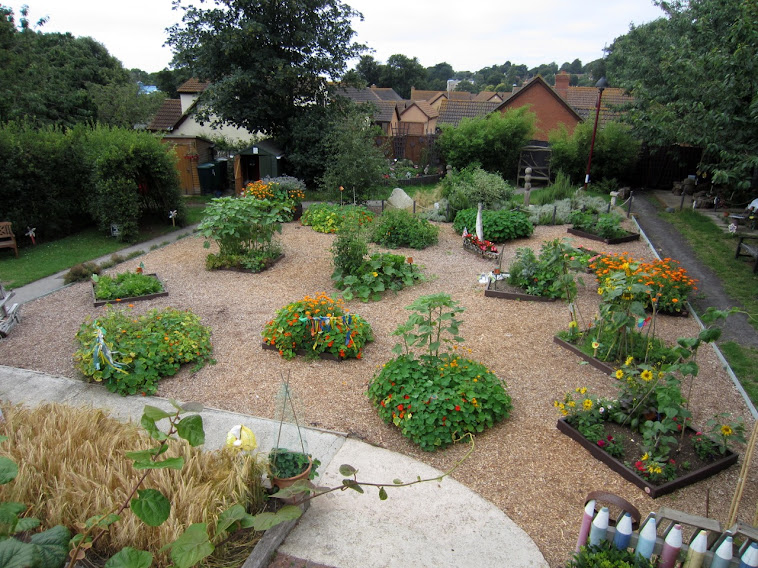for thereby will you gain the upper hand"
Found written on a 3000yr old Egyptian Tomb
The Garden Group continue to be busy when the weather allows. The beautifully engraved fossils have now been positioned and firmly fixed to Portland Stone bases. Information and species identification signs are being produced and should be in place for the start of half-term.
 |
| The Ichthyosaur mounted on Portland Stone |
We recently took delivery of a
Ginkgo biloba or Maidenhair tree. This tree is over 200m year old and featured in the Jurassic landscape. It has survived since then and the group managed to purchase a fine eight foot specimen. The planting of it though, was not so straightforward. About one foot under the soil we found the remains of one of the asphalt paths from the old school nursery site. A large sledgehammer and crowbar shifted the offending material and the tree was planted with plenty of compost and grit to keep it free draining
 |
| The Ginkgo biloba tree |
 |
| The mass of the old asphalt path! |
With the advent of colder nights it was decided to take precautionary measures and protect the two tree ferns with some horticultural fleece. The fleece was wrapped around the topmost foot or so and then gathered together and placed in the crown of the trees.
 |
| The frost protected Tree Fern |
 |
| The tetrapanax in the foreground does not seem to mind the cold nights |
 |
| The pseudopanax also thrives in cool weather with fantastic shiny leaves |
We were kindly given the option of collecting some self sown
Echiums from our good friends over the wall. A rescue mission was quickly mounted and the plants dug up, passed over the wall, and replanted in as quick as time as possible.. In all about 40 plants were retrieved. We are very grateful to our neighbours for their generosity
 |
| Re-housed Echiums |
 |
| The Echium work station |
Things are moving in the garden despite the cold snap. The willow classroom is waking up and will soon need trimming to regain the igloo shape.
 |
| Young willow leaves bursting out |
 |
| Blue Crocus in flower |
 |
| Chain fern frond slowly unfurling |
 |
| Daffodil with visitor! |
 |
| Cellandine flowers |
 |
| White Crocus flowers |
 |
| Tete-a tete daffodils |
 |
| Skywards view of the Hazel catkins |
Strange goings on last Sunday where a couple of members of the Garden Group were spotted drilling holes into the heels of a pair of old wellington boots. What is going on there!
Finally on a serious note. Somebody has released a goldfish into the school wildlife pond. This could well have a disastrous effect on the insect life living in the pond. Small larvae including beautiful damselfly larvae will be effected but even more serious is the strong likelihood of bringing about the death of our frog population. Oriental fish are known to assist with the spread of
ranavirosis.
Researchers from Exeter University have recently urged people to stop filling water
features with exotic fish after finding that
ranavirosis, a disease that kills
thousands of frogs each year, increases in their presence.
The presence of the goldfish may cause wild frogs to produce a particular stress hormone that reduces their
immune function, and hence their ability to fight the disease.
A goldfish will eat everything available - tadpoles and
insects - so there will be no wildlife left. Furthermore their excreta will alter the water quality.
The Group have worked hard to maintain a viable and productive wildlife pond in the garden. We have 5 species of Dragonfly and 3 species of Damselfly breeding in it. It would be catastrophic if all the hard work was done in vain. Ornamental ponds are for goldfish not wildlife ponds!
We are trying to catch the offending goldfish but it proving very difficult. Perhaps 'incognito' would have the decency to discreetly remove it when no-one is looking!


















